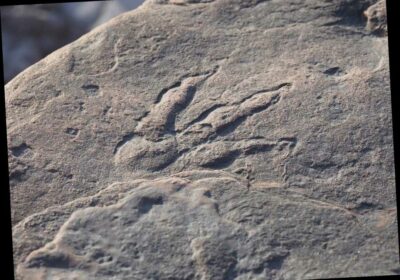Girl, 4, Discovers 220 Million-Year-Old Dinosaur Footprint on Welsh Beach

A 4-year-old girl on a beach walk with her family stumbled upon an incredibly well-preserved dinosaur footprint that stretches back 220 million years.
Lily Wilder was out for a stroll at Bendricks Bay near Barry in south Wales in December when she stumbled upon the footprint in a loose block sitting near the ocean, Amgueddfa Cymru National Museum Wales said in a press release.
"It was Lily and [her dad] Richard who discovered the footprint," her mom Sally said in a statement. "Lily saw it as they were walking along and said, 'Daddy, look.' When Richard came home and showed me the photograph, I thought it looked amazing. Richard thought it was too good to be true. I was put in touch with experts who took it from there."
Though the spot is well-known for dinosaur footprints, Lily's find turned out to be "the best specimen ever found on this beach," said Cindy Howells, the museum's paleontology curator.
The footprint is called a grallator, and was made 220 million years ago by a dinosaur, though exactly which type remains unclear. It's about 4 inches long, and the creature that left it is believed to have been a slender animal that walked on its two hind feet, standing about 2 ½ feet tall and 8 feet long.
Howells said that the find will help paleontologists gain a better understanding of just how these early dinosaurs walked.
Though no fossilized bones were left behind in the area that might help indicate exactly which type of dinosaur left the mark, similar footprints left by a Coelophysis have been found in the United States.
"Its spectacular preservation may help scientists establish more about the actual structure of their feet as the preservation is clear enough to show individual pads and even claw impressions," the release said.
Sally Wilder said that it was Lily's grandmother who encouraged the family to reach out to local experts to further the investigation, NBC News reported.
"She is really excited but doesn't quite grasp how amazing it is," the proud mom told the outlet.
The footprint was legally removed from the beach with permission from Natural Resource Wales, and was taken to the National Museum Cardiff to be protected and studied by scientists.
Source: Read Full Article
